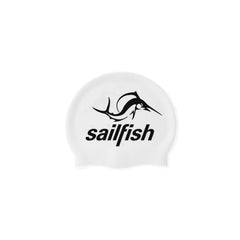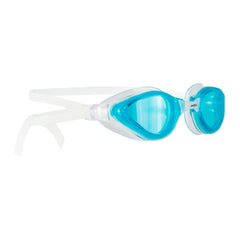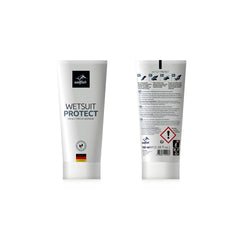Triathlon distances: What distances are there and which one is right for you?
Triathlon is an endurance sport that consists of three disciplines: swimming, cycling and running. Distances vary depending on the competition and can range from sprint to Ironman distance. The choice of distance depends on several factors, such as physical fitness, personal goals and experience level.
The sprint distance is the shortest triathlon distance and consists of a 750-meter swim, 20-kilometer bike ride and 5-kilometer run.
The Olympic distance is the most common triathlon distance and includes 1.5 kilometers of swimming, 40 kilometers of biking and 10 kilometers of running.
The middle distance is a challenge for advanced athletes and includes 1.9 kilometers of swimming, 90 kilometers of biking and 21.1 kilometers of running.
The Ironman distance or long distance is the longest and toughest triathlon distance and consists of 3.8 kilometers of swimming, 180 kilometers of biking and a marathon run of 42.2 kilometers.
No matter which distance you choose, triathlon requires a high level of physical fitness and mental strength. Proper preparation and training planning are critical to successfully achieving the goal. Triathlon is a sport that deserves a high level of respect and is a challenge for any athlete.
Sprint Distance
The sprint distance is the shortest distance in triathlon and is ideal for beginners and athletes who want to improve their speed. The course length is usually 750 meters of swimming, 20 kilometers of biking and 5 kilometers of running.
The swim is usually in a lake or ocean and is a 750 meter lap. Athletes start together and swim clockwise around the buoys. The swim is often the most challenging discipline for beginners, but with some training you can progress quickly.
The bike course is flat and fast and usually follows paved roads. Athletes ride a lap of 20 kilometers and must pay attention to traffic rules. It is important that athletes control their speed and do not overexert themselves in order to save energy for the subsequent run.
Running is the last discipline and covers a flat distance of 5 kilometers. Athletes must manage their strength well to have enough energy left at the end. It is important that athletes control their running speed and do not overexert themselves to avoid injuries.
Overall, the sprint distance is a great way to get into triathlon or to improve your speed. With some training and preparation, any athlete can successfully complete this distance.
Olympic Distance
The Olympic distance is a very popular triathlon distance, also known as the standard or short distance. This distance is often recommended as an introduction to the world of triathlon, as it is doable for most athletes and provides a good challenge.
The Olympic distance consists of a 1.5km swim, a 40km bike ride and a 10km run. This distance is the official triathlon distance at the Olympic Games and is considered by many triathletes to be their favorite distance.
The swim distance is usually done in open water such as lakes, rivers or the ocean. The bike course consists of one or more laps on a road or course with flat or hilly sections. The run is usually on asphalt or gravel and can be flat or hilly.
In the Olympic distance, the times of the athletes are very different. The fastest athletes can complete the distance in about 2 hours, while other athletes need more than 3 hours. It is important to note that the time it takes an athlete depends on many factors, such as the weather, the distance, and the athlete's physical condition.
Overall, the Olympic distance is a great challenge for any triathlete and is a great way to get started in the world of triathlon.
Middle Distance
The middle distance in triathlon is a demanding challenge that is suitable for both experienced athletes and beginners. We've taken a look at this distance and want to share our findings with you.
The middle distance, also known as "Half Ironman" or "70.3", consists of 1.9 kilometers of swimming, 90 kilometers of cycling and 21.1 kilometers of running. This distance requires good physical fitness as well as specific preparation and planning.
In swimming, it is important to have a good technique and build endurance to complete the 1.9 kilometers without interruptions. For cycling, make sure you have good aerodynamics and choose the right gears to save energy. The final half marathon requires good running technique and endurance.
The middle distance requires good nutrition and hydration during the race. It is advisable to drink regularly and consume carbohydrates to provide the body with sufficient energy.
Overall, the middle distance is a demanding but rewarding challenge for triathletes. With the right preparation and planning, you can successfully complete this distance.
Long distance / Ironman distance
The long distance is one of the most demanding triathlon distances. It consists of 3.8 km swimming, 180 km cycling and 42.195 km running. The goal is to complete this distance as fast as possible.
To successfully complete the long distance, extensive preparation is necessary. We recommend training for at least six months to build up the endurance and strength for this challenge.
During the swim, we need to focus on our technique to conserve energy and increase our speed. When cycling, it is important to find a comfortable position on the bike and control our pace to avoid cramps and exhaustion. When running, we need to focus on our running style and manage our energy well to keep going until the finish.
There are different strategies to tackle the long distance. Some athletes prefer a steady pace throughout the race, while others prefer a faster pace at the beginning and then slow down. It is important to choose a strategy that fits our physical abilities and training level.
Overall, the long distance is an incredible challenge that requires a lot of training and preparation. But with the right attitude and preparation, we can successfully overcome this challenge.
Super Sprint Distance
The super sprint distance is the shortest triathlon distance. It is ideal for beginners or for those who want to test their fitness. The Super-Sprint distance consists of:
- 400 meter swim
- 10 kilometers cycling
- 2.5 kilometers of running
This distance is very fast and intense, as it must be completed in a short time. It is important to warm up before starting to avoid injuries.
The swim takes place in a pool or open water. Cycling takes place on a flat track, while running takes place on a flat track or treadmill.
To be successful at the super sprint distance, you have to perfect your technique and control your pace. It is also important to have good endurance to complete the distance.
Overall, the super sprint distance is a great way to enter the world of triathlon and test your fitness.
Factors that influence the distance
When planning a triathlon, it is important to choose the right distance. The distance depends on several factors, which we will explain below.
Swim distance
The swim distance is an important factor in determining the triathlon distance. A longer swim distance requires more strength and endurance. Most triathlons have a swim distance of 750 m to 3.8 km.
Bike course
The bike course is another important factor in determining triathlon distance. A longer bike course requires more endurance and strength. Most triathlons have a bike course of 20 km to 180 km.
Run course
The run course is the last part of the triathlon and requires a lot of endurance and willpower. A longer run course requires more endurance and strength. Most triathlons have a run course from 5 km to 42.2 km.
Terrain
Terrain is also an important factor in determining triathlon distance. A hilly course requires more strength and endurance than a flat course. Some triathlons also take place on uneven terrain, making the distance even more challenging.
Weather conditions
Weather conditions can affect the distance of the triathlon. Heat and high humidity can make the distance more difficult, while cool weather can make the distance easier.
Overall, there are many factors that can affect triathlon distance. It is important to consider these factors when planning a triathlon to ensure that the distance is appropriate and provides a challenge to participants.
Training Strategies for Different Distances
For each triathlon distance, there are specific training strategies to best prepare for the race. We have compiled the most important tips for you:
Sprint distance
The sprint distance is the shortest triathlon distance and includes 750 meters of swimming, 20 kilometers of cycling and 5 kilometers of running. To prepare for this distance, we recommend the following training strategies:
- Swim training: interval training with short distances and intense sprints.
- Bike training: interval training with high intensities and short distances
- Running training: interval training with high intensities and short distances
Olympic distance
The Olympic distance is the second shortest triathlon distance and includes 1.5 kilometers of swimming, 40 kilometers of biking and 10 kilometers of running. To prepare for this distance, we recommend the following training strategies:
- Swim training: longer distances with a focus on technique and endurance.
- Bike training: longer distances with focus on endurance and speed
- Run training: longer distances with focus on endurance and speed
Middle distance
The middle distance is challenging and includes a 1.9 kilometer swim, 90 kilometer bike ride and 21.1 kilometer run. To prepare for this distance, we recommend the following training strategies:
- Swim training: longer distances with a focus on technique and endurance.
- Bike training: longer distances with focus on endurance and speed
- Run training: Longer distances with focus on endurance and speed, as well as specific training for the transition from cycling to running.
Long distance
The long distance is the longest triathlon distance and includes 3.8 kilometers of swimming, 180 kilometers of biking and 42.2 kilometers of running. To prepare for this distance, we recommend the following training strategies:
- Swim training: longer distances with a focus on technique and endurance.
- Bike training: Longer distances with focus on endurance and speed, as well as specific training for the transition from cycling to running.
- Running training: Longer distances with focus on endurance and speed, as well as specific training for the transition from cycling to running.
We recommend that you consult with an experienced coach and customize your training strategy to meet your individual needs.
Health considerations
Triathlon requires us to prepare for intense physical activity. Therefore, you should take into account some health considerations to avoid injuries and health problems.
Training
A well-planned training program is important to prepare for triathlon. You should take your time to prepare your body for the load and not overload it. It is also important that you have enough time for recovery and regeneration to avoid injuries.
Nutrition
A balanced diet is important to maintain your energy and endurance during the triathlon. you should make sure to eat enough carbohydrates, proteins and fats. It is also important to drink enough fluids to avoid dehydration.
Injuries
Injuries can occur in triathlon if we don't prepare properly or overexert ourselves. You should take time to warm up and stretch to avoid injury. If you have pain or injury, you should give yourself adequate time to recover before continuing with training or competition.
Medical Examinations
Before you begin training, you should be examined by a physician to ensure that you are healthy enough to participate in triathlon. You should also make sure that you have adequate medical care during the race in case you need medical assistance.
Final Considerations
Having looked in detail at the different triathlon distances, we can state that each of them brings its own challenges and attractions. Although there are many similarities, there are also significant differences between each discipline.
Whether you choose a sprint triathlon, an Olympic distance, or a long distance, it is important to prepare adequately and to consider your individual strengths and weaknesses. Good preparation includes not only training, but also proper nutrition, recovery and mental focus.
When it comes to choosing the distance, one should not be guided by false ideas or external influences. It is important to be realistic and consider your own goals and possibilities. A longer distance does not necessarily mean a greater challenge or a higher priority.
Ultimately, triathlon is about personal challenge and having fun. Whether you choose a short or long distance, every triathlon is a success and an accomplishment to be proud of.





